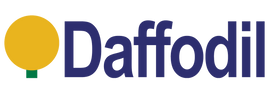With the release of the Audar E2 last year, and Daffodil proudly being the first retailer to provide this innovative tech for public consumption (rather than behind closed doors), we took a step towards "telehealth".
The E2 is a product so different from the usual lineup, that it warrants some extra explaining. After all, Telehealth was established in places like the US but has no real centralised usage in the UK, instead being used sporadically and mainly for data storage and transfer than actual diagnosis or health management work.
As the government begins to finalise the NHS 10-Year-Plan, part of which is remote monitoring, E2 can help us understand what that might really mean and look like.
Telehealth in a Nutshell
Telehealth is what is sounds like, health delivered remotely. Just like television is video delivered remotely or a telephone allows sound to be delivered remotely!
Telehealth includes but is not limited to remote interaction with doctors, such as videocalls or image upload systems for diagnoses, as well as online data storage and, soon, remote monitoring.
The core idea of Telehealth is it makes healthcare more accessible by enabling a low-maintenance, long-distance alternative to booking a face-to-face appointment, while also allowing more attention to be given to smaller issues before they develop into something worse.
Remote Monitoring in Telehealth
The role of remote monitoring in that Telehealth setting is to provide important context. By remotely monitoring vital signs, movement data, sleep times and more, the moment someone is identified at a hospital the staff can collate that data and contextualise a situation more accurately.
For example, if a man suffers a heart attack, staff can look at the remote heart data from the past week, month and even years to ascertain any trends or declines. In future, this will help identify when someone is most at risk before the point that the heart attack occurs.
This is just one example, using one vital sign. A full remote monitoring system combined with a telehealth platform could revolutionise healthcare turnaround times and allow both patients and doctors to make faster, more informed decisions.
How Accessible is This Technology?
It's a pretty picture to paint, but how close are we really to establishing any sort of groundwork on it?
One thing we can be sure of is that the hardware and software both exist and are compatible with scaling up to a national level. The Audar E2 we provide for public use, cutting out some of the red tape, enables users to monitor 4 vital signs, fall detection, manual SOS triggers and GPS location all without any prerequisites.
Whether it's through standard networks like Bluetooth and Wifi, or newer innovations like E2's IoT SIM card, remote monitoring is closer than ever before.
If you or a loved one are interested, don't hesitate to reach out to us. We understand committing to a technology like this can be daunting, but we have direct contact with the E2 manufacturers and designers, and will endeavour to answer any and all questions about its usability, technology and setup.
The Full E2 Suite
As of February 2025, we also have Audar E2 alternative straps. These watch straps provide either a secure standard buckle, or a more accessible and easy-to-use push-fit design. Both are modelled onto a silicone strap to maintain the E2's comfort and waterproof rating.
Want to chat about what E2 can do for you? Call us today!



Leave a comment